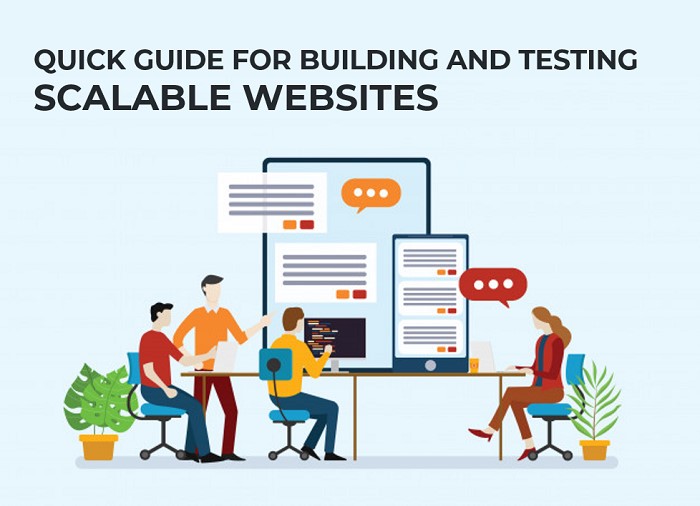More than 80% of the online userbase is comprised of mobile users. In today's digital age, it's a no-brainer that catering your website to mobile devices and making it responsive is a must. You cannot thrive if your websites aren't mobile responsive, and designers are catching on to the trend since mobile internet usage is continuing to rise. Mobile responsiveness means that your website offers a seamless user navigation experience when it comes to viewing it on different mobile devices like iPads, tablets, Android devices, iOS devices, etc. A huge chunk of your traffic will come from mobile users, and if you don't optimize your website to be mobile responsive, you're going to be missing out on a lot.
How To Get Started
Before you begin working on making your website mobile-friendly, it's important to get feedback on your current design. Google has a free mobile-friendly website testing tool that you can use to see if your website has been optimized to be mobile-responsive or not. Just type in the URL of your website in the search bar, and it will tell you what areas to work on. You'll even get a screenshot of what your website looks like on mobile web browsers if you use that tool. Now that we've got that out of the way, let's get started with what you can do below.
7 Tips To Make Your Website Scalable & Mobile-Friendly
Building websites to be scalable and mobile-friendly doesn't have to be hard. If you start with the right approaches, you'll be saving lots of time and money down the line. It's quite easy to get started, and we'll tell you the basics you have to know.

Check out our top 7 tips below for making your websites mobile-responsive and start implementing them today. And don't forget to test your website and get feedback from your visitors once you're done. That's important too.
1 Code With BootStrap
Bootstrap is a mobile-first and responsive coding framework. It uses a blend of JavaScript, HTML and CSS to create projects on the web. The reason we recommend using BootStrap if it's your first time designing for the web is that it has thousands of different themes and layouts that you can instantly use.
The documentation is comprehensive and easy to understand for common HTML elements, and it uses Sass and Lass as two of its CSS preprocessors. Overall, all the websites you design with BootStrap turn out to be scalable and mobile-responsive. They'll be displayed well according to different screen sizes, and you won't have to tweak or keep rewriting the code over and over. You can also use the AMP plugin to write your mobile-first webpages since that's another useful framework.
2 Disable Ad Blocks & Popups
Most people hate it when an ad or popup suddenly appears and blocks the screen while they're busy reading content. Chances are, the minute they see a popup, they'll exit your website and go somewhere else. If you're absolutely hell-bent on displaying a popup for your products, do it so that they are triggered once the visitor finishes scrolling down to the bottom of the page. For the ads, simply disable them since they're not worth it and disrupt the mobile view.
3 Optimize Your Website Speed & Loading Times
It's not the 1990s anymore, and people want websites that load fast and are efficient. You can optimize your website speed and improve site loading times in various ways. For your images and videos, we recommend compressing them and reducing the file sizes. High-resolution images and videos tend to take up more time loading up and slow down websites.
For your hosting provider as well, consider making an upgrade or changing web hosting plans if you feel like it's slowing your website down. Reputed website hosting providers like BlueHost, GoDaddy, A2 Hosting, and HostGator will be your best friends.
4 Remove Flash From Your Websites
Most old websites that are outdated or built using old HTML use Flash for some of its elements. Android and mobile devices don't support flash so scrapping those features is a good move. Build your websites using the latest frameworks and don't use old technology.
5 Add Viewport Tags
Viewport meta tags help you control the way websites appear on mobile devices. The tags tell the browser to adjust the size and dimensions of the content based on the devices that are being used to display it.
You can just add this line to your HTML code, and voila, that's it.
<meta name=”viewport” content=”width=device-width, initial-scale=1″>
6 Test Browser Compatibility
Testing your website is just as important as building and scaling it up. When you're done making your website, use browser testing tools or a reliable mobile browser like the LT Browser, which lets you see how your site appears on different devices. You can view changes in real-time, and what we like about the LT Browser is that it enables you to create your own "devices" for optimized site testing.
7 Run Debugging & Test For Glitches
Make it a practice to test your site elements often. Look for glitches and debug whenever possible. Spend time browsing your website and try to look at it from your visitors' point of view. Use Google Analytics tool to track website traffic and see which pages have the highest bounce rates. Work on fixing them and don't forget to optimize your website SEO. Conclusion
For our bonus tip, we suggest speeding up your web design workflow using responsive web design tools. There are many you can find online to help you build your webpages, and we've listed a few above. Optimizing your websites and making sure they're scalable begins with taking an iterative approach to site design.
You have to constantly tweak website elements and make sure they display correctly across various screen sizes and devices. If you keep these tricks in mind and implement them, you'll be designing mobile-first websites that are scalable in no time.








